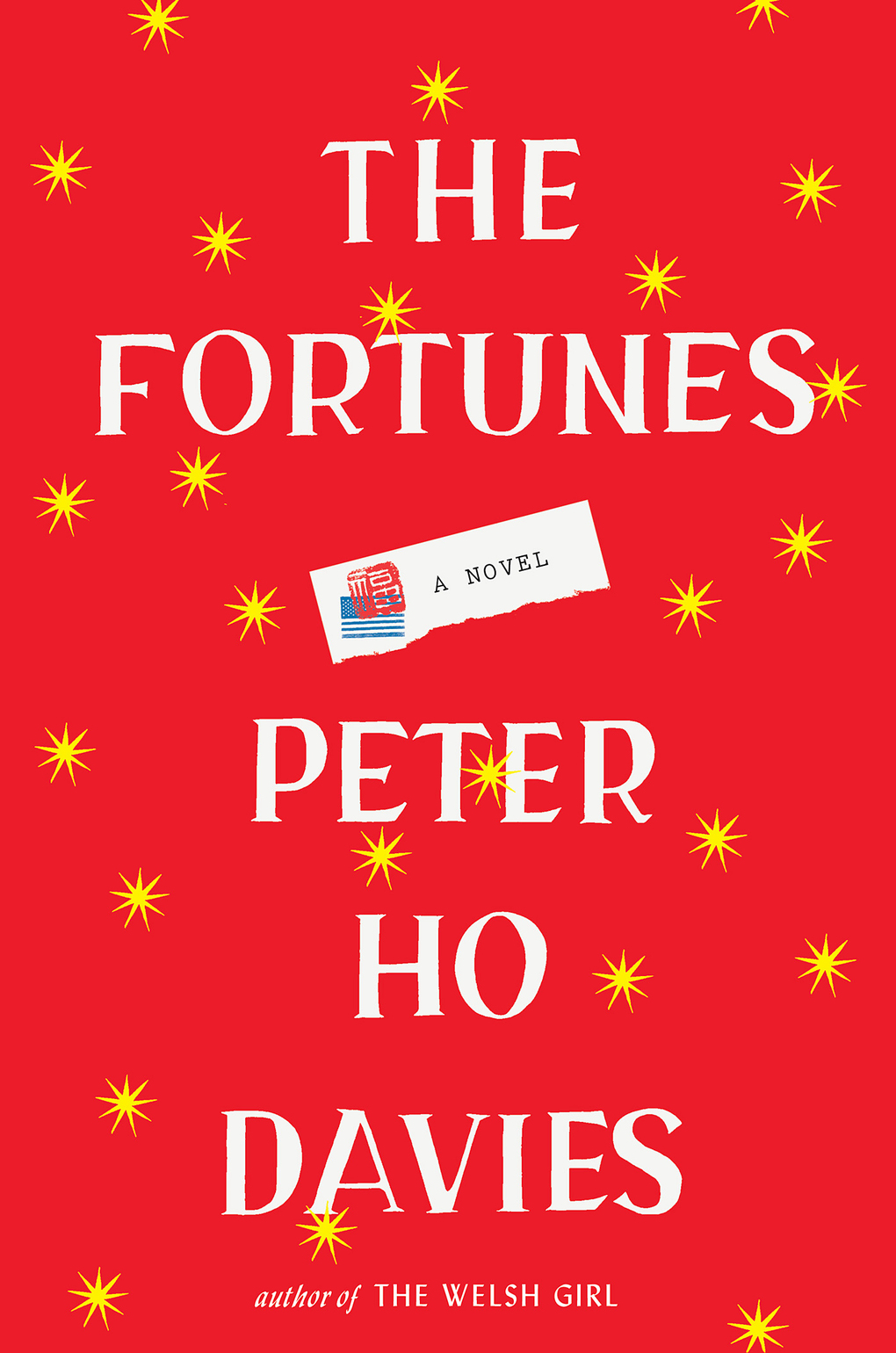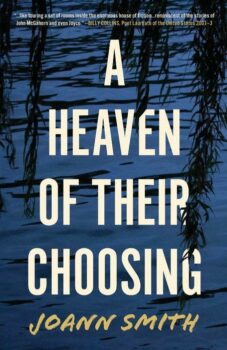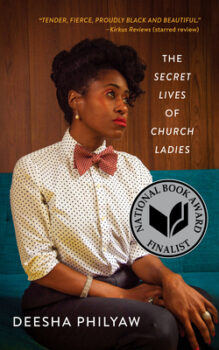“Last of Her Name,” the eponymous first story in Mimi Lok’s debut collection (Kaya Press, 2019), opens in the aftermath of a childhood stunt gone awry. Trying to act out a scene from The Return of the Condor Heroes in which Dragon Girl reposes balanced on a rope, Lok’s twelve-year-old protagonist has suspended a rope between her bedroom door and her wardrobe. “How was Karen supposed to know that her slight ninety-pound self would be enough to send the wardrobe crashing to the floor?”
It’s a brilliant image to ground a collection so full of characters precariously balanced on the thinnest of edges. In “The Wrong Dave,” a strange email correspondence with a one-time crush finds Dave on the precipice of calling off his engagement. In “The Woman in the Closet,” homeless Granny Ng takes up habitation inside a young businessman’s closet, secretly cleaning and cooking by day and peeing into a bottle by night to avoid being caught. In other stories, the thin edge takes the subtler shape of a well-drawn tension, as in “Bad Influence,” where Mayling faces the dilemma of her prodigal brother’s brief return home: Should she break his trust and tell their parents? Does he deserve to know how much pain he has caused the family?
What’s at stake in these precarious balancing acts, which so often find characters on the threshold between secret and revelation? On the one hand, damage and pain: “Lying in a stiff, tangled heap on the bedroom floor, [Karen] opens her mouth to let the blood seep out, and with her tongue she feels one, two, three holes where her teeth used to be.” But with that pain comes the growth suggested by Karen’s missing teeth—the graduation from innocent playacting to the “wreckage” that is reality, new knowledge of your own weight and what consequences it can bring down on your world.
Guiding Mok along these boundary lines are trust in her characters and faith in the writing process. In this interview, conducted over email, we discuss the role of constant, active empathy in revealing these characters and their stories on their own terms.
Interview:
Eric McDowell: Reading the collection, I was struck by a certain technical variety. There’s a short-short, a novella, and pretty much everything in between. Stories like “Last of Her Name” and “The Wrong Dave” span weeks and months (or longer!), while “I Have Never Put My Hope in Any Other but Thee” and “Bad Influence” follow shorter, contained sequences. How do you find your way to the right scope—I think of it almost as a kind of equilibrium—for each story?
 Mimi Lok: With the novella “The Woman in the Closet” (which follows Granny Ng, an elderly homeless woman who breaks into a young man’s home), I was interested in following Granny Ng closely over a substantial period of time and seeing how things unfold for her. The world of the story expanded as her journey led her to different locations and encounters with different people that I hadn’t previously thought of. I think that’s key to finding the equilibrium you mention—trusting your characters’ desires, needs, and impulses to take the story where it needs to go.
Mimi Lok: With the novella “The Woman in the Closet” (which follows Granny Ng, an elderly homeless woman who breaks into a young man’s home), I was interested in following Granny Ng closely over a substantial period of time and seeing how things unfold for her. The world of the story expanded as her journey led her to different locations and encounters with different people that I hadn’t previously thought of. I think that’s key to finding the equilibrium you mention—trusting your characters’ desires, needs, and impulses to take the story where it needs to go.
By contrast, “Accident” is half a page long and focuses on possibly 30 seconds of a character’s life as he contemplates the now, the before, and the hereafter. I don’t know exactly where that story came from, except at some point I might have had a vision of the scene. But it came out pretty quickly, and pretty fully formed I think.
In terms of story length, I hardly ever know how long a piece is going to be when I’m starting out. I just try to follow where the story wants to go and hope for the best.
In a related vein, most of the stories are told from the third person, but some juggle multiple points of view and others revisit previously introduced characters. I’m curious to hear how you approach point of view, especially in terms of the reader’s distance from the characters, the balance of interiority and external action and detail.
I ask a lot of questions: Why this point of view? Why only this one? What would happen if we inhabited another character’s point of view as well or instead—how would that challenge or complicate what we already know? Sometimes these questions occur when I’m already many pages deep into a story, which can be both annoying and invigorating. With first person and close third, there’s a lot of opportunity to play with what kind of access that point of view affords, and consequently what’s revealed or hidden—and how that squares (or not) with what you want revealed, or hidden from, your reader.
In thinking about the gap between the kind of exploratory following you describe above and the kind of step-back question-asking you describe here, I think of the revision process, which you hint at. Can you describe the role revision played in the evolution of some of what’s in the collection?
I’d written earlier drafts of the stories over roughly a ten-year span, and spent about three years working on the collection in earnest—rewriting, discarding, organizing. To be honest, much of it is a bit of a blur. But the story that was probably the trickiest in terms of point of view was “Wedding Night”—partly because of figuring out how the multiple points of view would work together, and partly because of the tension between trying to capture the fragmentary nature of memory across different consciousnesses and striving for a coherent narrative.
You’ve mentioned elsewhere that writing from ideas, rather than emotions or concrete details, can leave the work feeling “fictitious rather than lived.” Can you talk a bit about why you think this is, at least in your own work? What are the symptoms, on the page, of fiction that’s “dead on arrival” versus fiction that seems to live and breathe?
Sometimes of course the point is to draw attention to the fictitious or constructed nature of a piece of work, but the kind of fiction I’m referring to in this case is character-driven writing that is meant to transport and immerse the reader. What makes fiction come alive for me—both as a writer and as a reader—is the sense that, in one way or another, it’s rooted in desires and obsessions that live in realms of consciousness we don’t fully understand. And those desires and obsessions are allowed to drive the story, and the characters within, rather than purely the idea or the concept—otherwise, I find, the story can feel too managed or neat.
With characters, you don’t want to have a sense of the author moving puppet strings; they should feel like living, breathing people, and I think that can only come about through deep and constant empathy on the author’s part, especially for characters whose lives or beliefs are very remote from your own. Otherwise you just end up with an idea of a person, servicing the idea of a story. I think any sensitive reader can tell when a work of fiction feels like a thinly disguised thesis, a thought exercise, or a performance of a certain kind of writing, rather than a risky exploration with characters who feel deeply real. You might love, hate, or feel conflicted about these characters—but the main thing is that you believe in them and feel compelled to follow them wherever they go.
Fiction “rooted in desires and obsessions that live in realms of consciousness we don’t fully understand”—I love that. The story that comes immediately to mind is “I Have Never Put My Hope in Any Other but Thee,” where we only gradually come to empathize with the narrator’s stepmother, to glimpse the story from her point of view (though we never, technically, enter it).
In fact, several stories in the collection hinge on a protagonist’s relationship with a key “secondary” character, who exists at some distance from that protagonist (and us). I’m curious to hear about how you get to know these characters, whose story you’re not writing, strictly speaking.
I think it all comes down to the same thing—having empathetic curiosity for all of your characters regardless of the role they play in the story. And by that, I mean resisting lazy stereotypes or allowing any of your characters to be stand-ins for an idea rather than fully formed human beings. This is true with secondary, tertiary, even fleeting characters. That’s my problem as well—I’m interested in too many people and things! Having said all that, I don’t always know these secondary characters, but in a way they come alive as a result of the protagonist’s sincere desire to know them, and their sense that there is more to them than they know or are allowed to know.
A handful of themes do resonate throughout the collection. I’m thinking in particular of family relationships, “missed connections,” diaspora. How did you think about these throughlines as you worked on the stories and assembled the collection? Is there a point at which recognizing your themes becomes a help, rather than a hindrance?
I only started to think consciously about thematic connections between the stories in the assembling of the collection. When I was writing the individual stories—which spanned many years—I did not think about them in this way. I don’t know if my lack of self-awareness was a help or a hindrance. I only know that, every time I began work on a story, I wanted to explore certain impulses, or images or moments that came to me and suggested something more. Even if now, since the collection, I have a greater awareness of the themes that have preoccupied my writing, I still approach a new story in much the same way as before. Also, as you know, preoccupations can evolve and change over time.
Can you discuss some of the books and writers who have exerted special influence on Last of Her Name? Who are your models, your inspiration?
In the back of the book I shout out Maxine Hong Kingston, Gish Jen, and Peter Ho Davies as examples of authors whose writing was so important to me growing up. Not only because they were inspiring as immigrant Chinese writers, and I could see myself in their work, but also because they were so distinct from each other, and within their writing, so many artistic possibilities presented themselves. Alice Munro is such a touchstone writer for me—I think she, more than any other writer, helped me understand how deep, unflinching empathy is essential to writing characters and stories that feel true and unsettling.
To shift gears slightly in closing, I wonder if it’s fair to say that your day job has some connection with some of these issues. What is Voice of Witness, and how has your work there informed your approach to fiction, if at all (or vice-versa!)?
It really comes down to that empathetic curiosity I mentioned earlier. Voice of Witness is a nonprofit that amplifies the voices of people impacted by injustice, with a focus on migration and displacement and the criminal justice system. We do this through a book series and education program that are both rooted in oral history. The idea is that you cannot possibly claim to have an understanding of immigration in this country, say, or criminal justice issues, without hearing from the people with direct, lived experience of these issues. It’s like someone writing a book about you without ever having met you or spoken to you.
Mainly, my work with VOW has taught me two things: that empathy isn’t just something warm and fuzzy that happens to you, and that I don’t know what I don’t know. Empathy is an active choice, and something you have to exercise consistently and unflinchingly if you’re serious—not only about understanding the human condition, but also about breaking out of your own limitations and biases and striving to become a conscious, useful human being. Otherwise, what’s the point?







